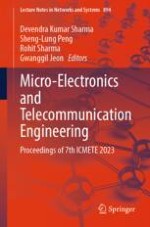The book presents high-quality papers from the Seventh International Conference on Microelectronics and Telecommunication Engineering (ICMETE 2023). It discusses the latest technological trends and advances in major research areas such as microelectronics, wireless communications, optical communication, signal processing, image processing, Big Data, cloud computing, artificial intelligence, and sensor network applications. This book includes the contributions of national/international scientists, researchers, and engineers from both academia and the industry. The contents of this book will be useful to researchers, professionals, and students alike.
